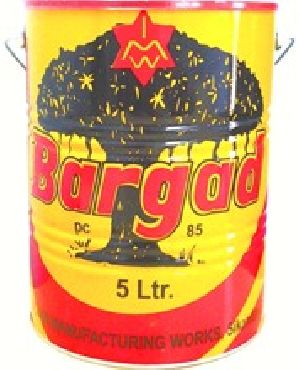
synthetic rubber based adhesive
Rubber base adhesive also called elastomeric adhesive, are widely used in industrial and household application. Rubber adhesives are bonded by a diffusion process in which the adhesive is applied to both surfaces to be joined. Once the adhesive solution is applied on the surface of the substrate, spontaneous or forced evaporation of the solvent must be produced to obtain a dry adhesive film. Humidity must be controlled and avoided by increasing the temperature during solvent evaporation. Dry adhesive films on the two substrates to be joined must be placed in contact to develop adequate autoadhesion.
...more
Rubber Adhesive
Rubber base adhesive also called elastomeric adhesive, are widely used in industrial and household application. Rubber adhesives are bonded by a diffusion process in which the adhesive is applied to both surfaces to be joined. Once the adhesive solution is applied on the surface of the substrate, spontaneous or forced evaporation of the solvent must be produced to obtain a dry adhesive film. Humidity must be controlled and avoided by increasing the temperature during solvent evaporation. Dry adhesive films on the two substrates to be joined must be placed in contact to develop adequate autoadhesion.
...more
Primer
Primers are liquids that may be applied to a substrate prior to application of an adhesive or a sealant. The reasons for their use are varied and may include, either singularly or in combination, the following: Protection of surfaces after treatment.Promoting chemical reaction between adhesive and adherend. Inhibiting corrosion of the substrate during service. Serving as an intermediate layer to enhance the physical properties of the joint and improve bond strength.Being lower in viscosity than the adhesive or sealant, primers can be used to penetrate porous or rough surfaces to provide better mechanical interlocking and for sealing such surfaces from the environment. Primers are often applied and appear as protective surface coatings. Application processes and equipment for applying primers are similar to those used in applying a paint coating to a substrate. The application of a primer is an additional step in the bonding process, and it comes with associated costs and quality control requirements. Therefore, primers should only be used when justified. The most likely occasions when a primer is needed are: when the adhesive or sealant cannot be applied immediately after surface preparation, when the substrate surface is weak or porous, or when the adhesiveadherend interface requires additional protection from environments such as moisture.
...more
Polyurethane Adhesive
Polyurethanes are one-component thermoplastic systems in solventsoften containing catalysts in small amounts to introduce a degree of thermosetting properties. They are also available as two-part thermosetting products in liquid form, with or without solvents,second part is a hardener. Polyurethane adhesives make good adhesives for a number of reasons: They effectively wet the surface of most substrates. They can interact with the substrate through polar interactions. Through molecular composition the adhesive stiffness, elasticity and crosslinking can be tailored to suit specific needs. The adhesive solutions are applied to both surfaces to be bonded. Some time is allowed for the solvents to evaporate and the surfaces are then pressed together, at which point inter-diffusion of the polymer chains will occur. Based on their outstanding properties polyurethane adhesive have found broad use in many application areas The segments in which polyurethane adhesives are used most are:footwear industry, construction , woodworking, transportation, packing and assembly operations. Polyurethane (PU) Shoe Adhesive, It has strong initial strenght, good heat-resistance, uneasy to form fine thread, short tack time,suitable for both handwork etc.
...moreBe first to Rate
Rate ThisOpening Hours